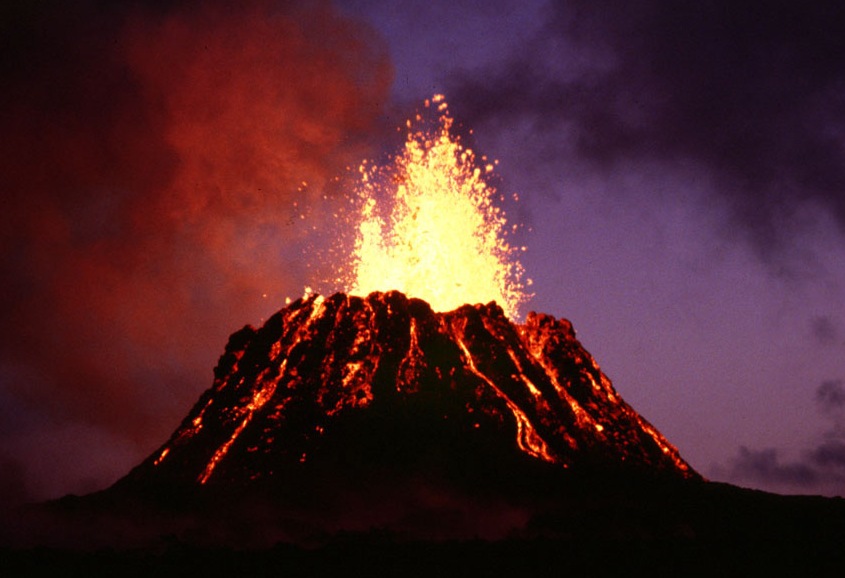M&M's are America's second favorite chocolate. With milk chocolate, peanut, almond, and other delicious flavors, M&M's are a true assortment of delicious. Did you know though that M&M's have had a pretty colorful history? And much of it is due to science.
M&M's were introduced in 1941 by Mars and became a hit with Army soldiers. After World War II, they were here to stay. The original colors of M&M's were brown, yellow, green, red, and purple. In 1949, purple M&M's vanished and were replaced by tan. Red M&M's disappeared in 1976 and were replaced by orange. The popular red didn't return until 1986. And in 1995, tan M&M's bowed goodbye as they were replaced by blue.
The 1970's saw a surge of new public concerns over personal, common, and global health. The Environmental Protection Agency was formed in December 1970, and the Consumer Product Safety Commission formed in 1972. The Marine Mammal Protection Act ('72), Endangered Species Act ('73), Safe Water Drinking Act ('74), Clean Water Act ('77), and the Wilderness Act ('78) were all passed. Aerosols and lead-based paint were banned in 1978. Anti-smoking campaigns were full steam ahead. Red is a popular color and is commonly seen in food, so what was the big deal over red M&M's? Turns out it was all due to chemistry. In 1976, the FDA pulled red dye no.2 over carcinogen concerns, and Mars pulled red M&M's in response.
The dye was linked to cancer in a 1971 Russian study, and then after the FDA did their own study, decided to ban the dye in 1976. Turns out though, the red dye that was so controversial, actually wasn't used in M&M's, but to make consumers feel better and to quell any confusion, Mars pulled the red candies anyway. Orange replaced red, and then ten years later after the red dye panic had died down, Mars brought red back, but decided to keep orange along.
There's a saying that "today's kids will never understand..." and it's true. As a 90's baby, I shake my head at all of the great things in my youth that today's youth will never get to experience, such as Windows XP, flip phones, green and blue ketchup, Game Boy's and Nintendo 64's, Disney movies on VHS tapes from Blockbuster, Lite Brites, and actually good cartoons on TV - and not watching them on 46'' flat screens either. Well that's how 70's and 80's kids feel about tan M&M's.
Tan M&M's were dropped by Mars in 1995 after a contest was held to bring in a new color, which blue won by a large margin. Yet unlike orange and red, tan M&M's didn't get to stick around when blue arrived. It seemed redundant to have brown, tan, and orange all in the same bag. Plus blue is such a better color anyway. Well why keep tan all those decades, then just dump it? Well that's the world of marketing. Sometimes brands need a refresher, so contests are held to bring a new face. Here's an M&M commercial from 1995 where the end began.
Organic chemistry is a real thing in the world of food. As Mars and other companies move to replace "artificial" colors with "natural" colors, more suitable ingredients have to be found. As it turns out, blue is not an easy color to find in the wild. A blueberry is actually more red than blue, for instance. Even General Mills ran into the same problem, as they have not yet been able to find suitable blues and greens for Trix, and now have been forced to bring them back.
Mars has looked into using spirulina algae to create natural blue, but they have hit roadblocks, from poor taste, poor coloring, and not enough spirulina. Other ingredients being considered to help make natural blue are red cabbage, berries, flowers, bacteria, fungi, sea sponges, and aged red wine. While blue dye has been a debacle and debate, some scientists think it should be given even more attention. In 2009, University of Rochester researchers claimed that blue dye in M&M's could possibly help cure spinal injuries, after running trials in rats. The only side effect was well, it temporarily turned the rats blue.
Not only does changing colors take a visual adjustment, as with Trix, but getting consumers on board with new taste can be a challenge - even if there wasn't actually a change in taste. It has been shown that colors in food can make us think we taste things that aren't really there. One 1980 study showed that adding red coloring could make food taste 10 percent sweeter. In the same study, a drink was given red dye and some subjects claimed to taste cherry. They were given the same drink with green coloring, and there were claims of a lemon-lime taste. Our brains have evolved to appreciate colors, so even the slightest change to our blue M&M's could create displeasure among consumers.
Making colorful candies takes more than just painting some rainbows on them. A lot of chemistry goes into M&M's and other candies, and there is a psychological science as well. "Sensory-specific satiety" is the scientific phenomenon that the more variety in flavors or colors in food, the more you're going to eat and the more appealing it looks. This is possibly a reason Mars decided to give tan the boot in favor a more eye-popping and visually pleasing blue, pink, or purple.
While there may be a shortage of blue dye, and a complete shortage of tan M&M's, you won't ever have to worry about M&M's running out. The New Jersey factory makes 2 billion M&M's every 8 hours, or 69,000 every second, enough to fill every seat in the New England Patriot's football stadium. No wonder Tom Brady won't retire.
*NBC News, Live Science, Mental Floss, M&M commercials Youtube, Bustle, Washington Post, CNN, NJ.com, New England Patriots, Movieclips Youtube, New York Times

